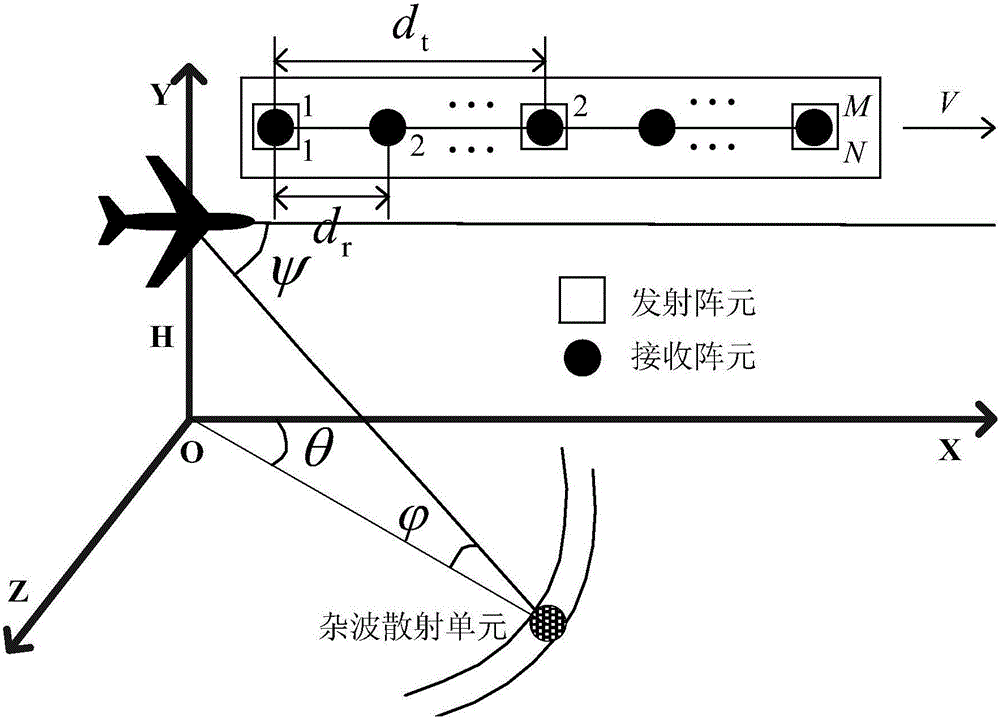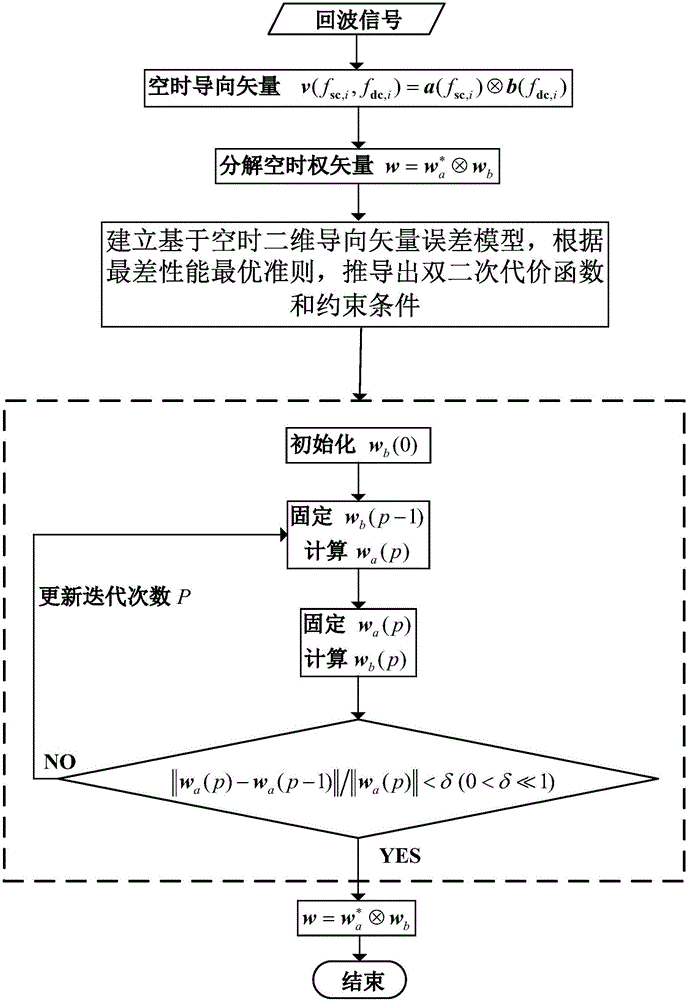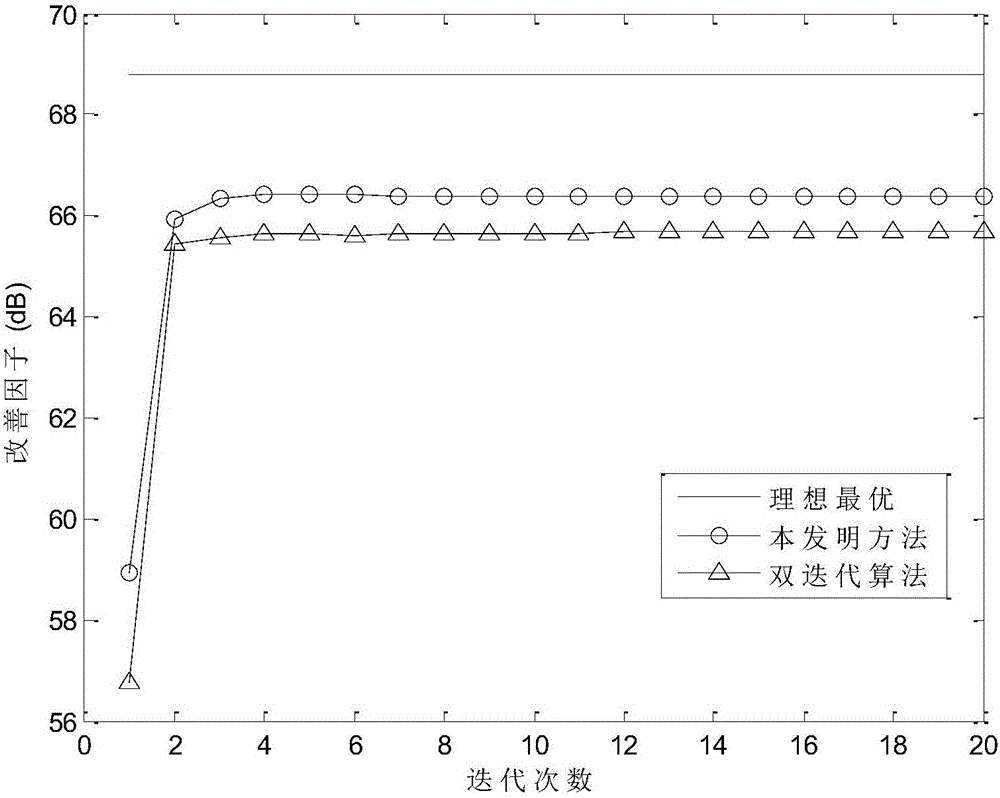Airborne MIMO radar robust dimension-reduction space-time self-adaptive processing method
A processing method and dimensionality reduction technology, which are applied in the field of robust dimensionality reduction space-time adaptive processing and the robust dimensionality reduction space-time adaptive processing of airborne MIMO radar, which can solve the problem of difficult to meet real-time processing requirements and increase the number of training samples Demand, performance degradation, etc.
- Summary
- Abstract
- Description
- Claims
- Application Information
AI Technical Summary
Problems solved by technology
Method used
Image
Examples
Embodiment 1
[0046] Embodiment one, see Figure 1~2 As shown, a robust space-time adaptive processing method for airborne MIMO radar includes the following steps:
[0047] Step 1. Separate the MNK × 1-dimensional space-time two-dimensional steering vector w in the airborne MIMO radar into MN × 1-dimensional airspace steering vector w a and K×1-dimensional time-domain steering vector w b , Among them, M is the number of transmitting array elements, N is the number of receiving array elements, K is the number of coherent pulses, and the symbol Indicates the Kronecker product, and the superscript * indicates the conjugation of a vector or matrix;
[0048] Step 2. Establish a space-time two-dimensional steering vector error model, and deduce the biquadratic cost function according to the optimal criterion of the worst performance as The constraints are in, is the matrix form of the received data vector, a and b represent the assumed space-domain steering vector and time-domain steer...
Embodiment 2
[0051] Embodiment two, see Figure 1~5 As shown, a robust space-time adaptive processing method for airborne MIMO radar includes the following steps:
[0052] Step 1. Separate the MNK × 1-dimensional space-time two-dimensional steering vector w in the airborne MIMO radar into MN × 1-dimensional airspace steering vector w a and K×1-dimensional time-domain steering vector w b , Among them, M is the number of transmitting array elements, N is the number of receiving array elements, K is the number of coherent pulses, and the symbol Indicates the Kronecker product, and the superscript * indicates the conjugation of a vector or matrix;
[0053] Step 2. Establish a space-time two-dimensional steering vector error model, and deduce the biquadratic cost function according to the optimal criterion of the worst performance as The constraints are in, is the matrix form of the received data vector, a and b represent the assumed space-domain steering vector and time-domain steer...
Embodiment 3
[0082] Embodiment three, see Figure 1~5 Shown, in conjunction with specific embodiment the present invention is described in further detail, figure 1 In , it is assumed that the height of the radar carrier is H, and it is flying in a straight line at a constant speed V along the positive direction of the X axis. The direction of the MIMO radar antenna array is perpendicular to the flight direction of the carrier aircraft, and the operating wavelength of the radar is λ. It has M transmitting array elements and N receiving array elements, all of which are omnidirectional antennas, and are evenly arranged on the front side, with a spacing of d t and d r =λ / 2. Assuming a uniform distribution N in the distance gate c clutter scattering unit, the i-th (i=1,2,...,N c ) The azimuth angle of the clutter unit is θ i , and the pitch angle from the gate is The cone angle is ψ. Then the corresponding airspace transmitting and receiving steering vectors are and in is the norm...
PUM
 Login to View More
Login to View More Abstract
Description
Claims
Application Information
 Login to View More
Login to View More - R&D
- Intellectual Property
- Life Sciences
- Materials
- Tech Scout
- Unparalleled Data Quality
- Higher Quality Content
- 60% Fewer Hallucinations
Browse by: Latest US Patents, China's latest patents, Technical Efficacy Thesaurus, Application Domain, Technology Topic, Popular Technical Reports.
© 2025 PatSnap. All rights reserved.Legal|Privacy policy|Modern Slavery Act Transparency Statement|Sitemap|About US| Contact US: help@patsnap.com



